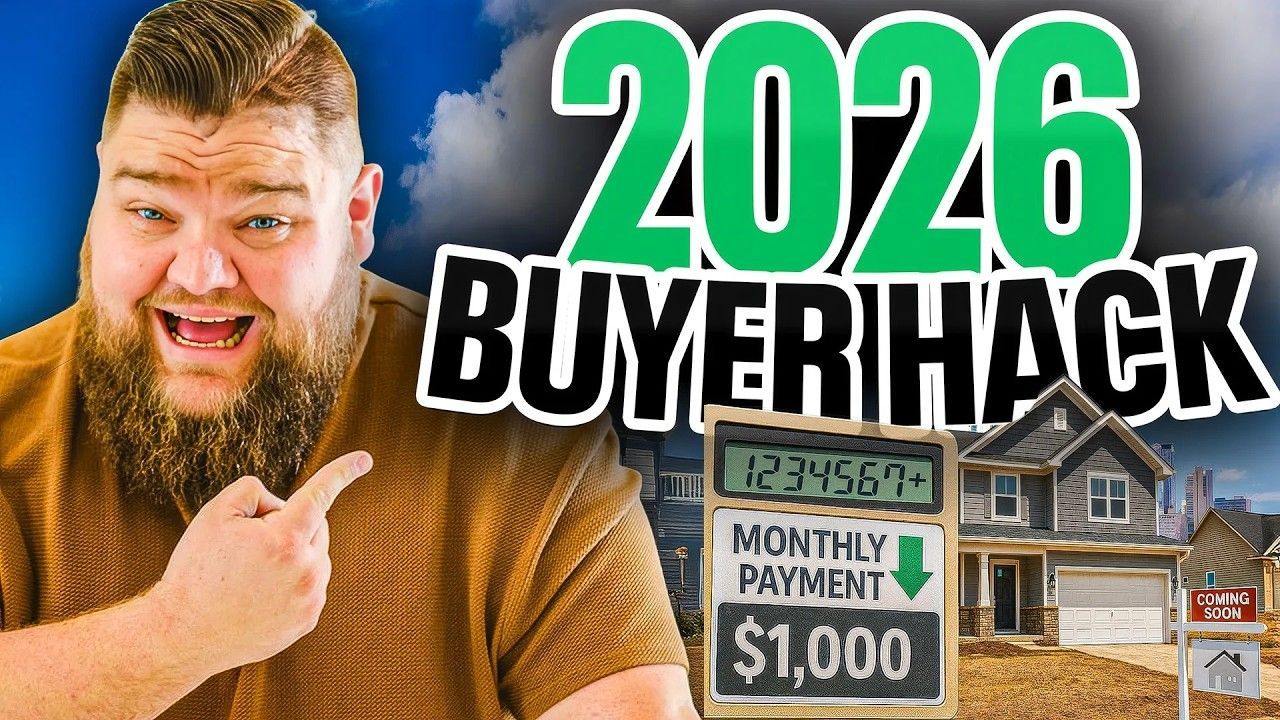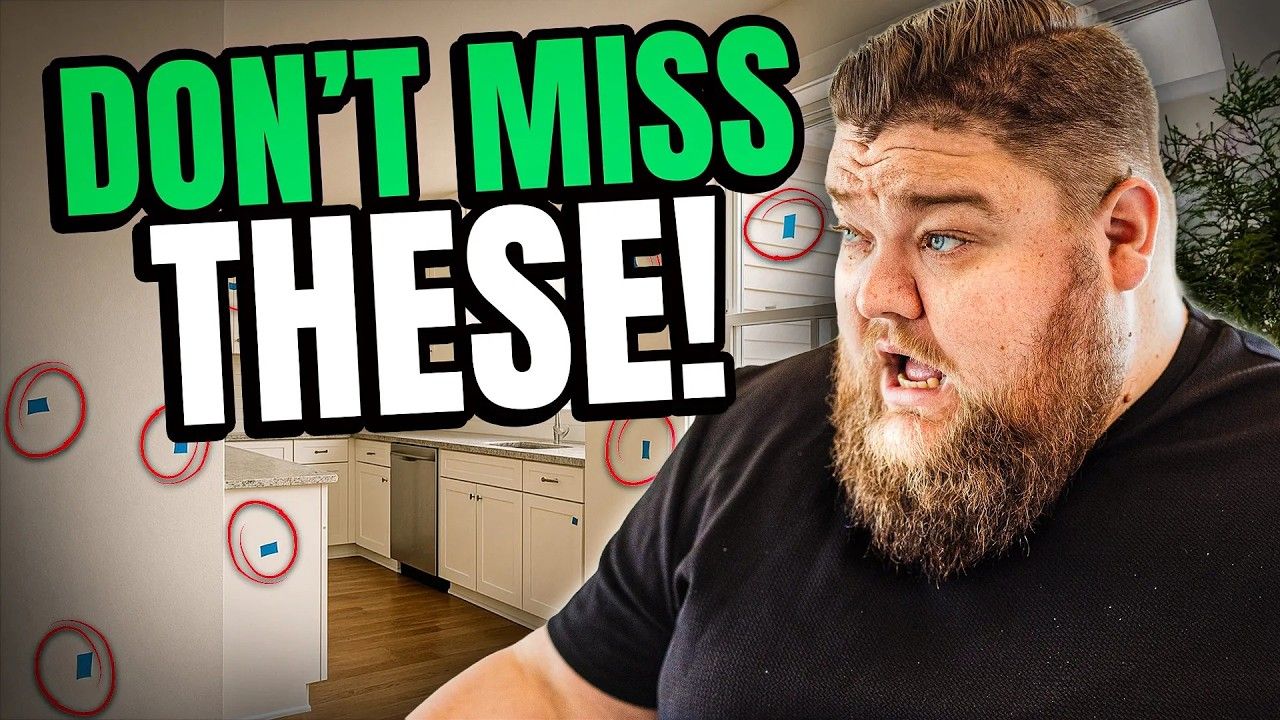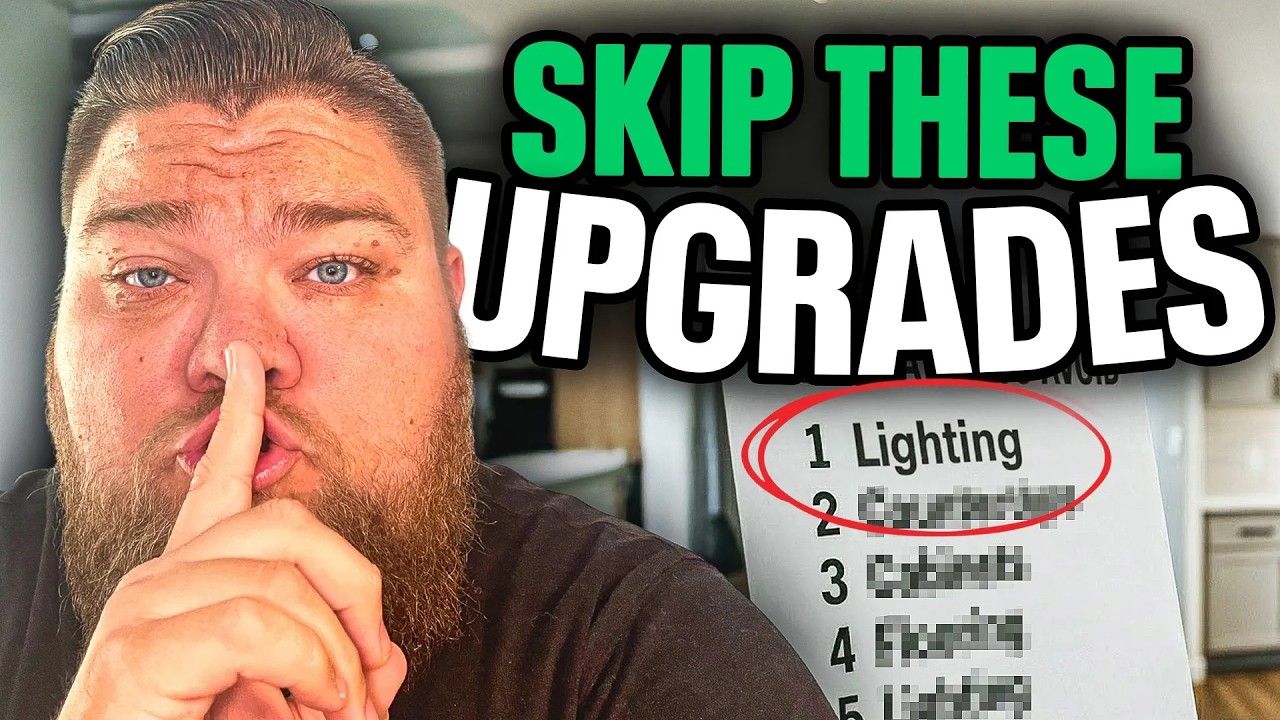DFW New Construction: The $50K Floor Plan Price Gap Explained
If you've ever been excited about a move-in ready home, only to start doom-scrolling and see the "same" floorplan tens of thousands cheaper a city over, you’re not alone. My name is Zak Schmidt, and in this guide I’m breaking down exactly why that happens and how to shop smart for new construction homes in DFW. I walk new buyers through the realities builders face, what actually drives price differences, and how to negotiate without undermining your long-term equity.
Table of Contents
- Introduction: The "Same House" Trap
- Core Idea: Not All "Same Plans" Are Actually Equal
- The Two Biggest Drivers of Price for New Construction Homes in DFW
- Other Pricing Levers Builders Use
- Real Example: Chesterfield Plan, Two Different Price Tags
- Why Incentives Aren’t Evidence of Overpricing
- Why "Lowballing" Can Actually Hurt You
- Practical Negotiation Strategies for New Construction Homes in DFW
- How to Compare New Construction Homes in DFW Correctly
- When Price Reductions Are Possible
- Resources and Next Steps
- FAQs About Buying New Construction Homes in DFW
- Key Takeaways — A Checklist Before You Submit an Offer
- Final Thoughts
Introduction: The "Same House" Trap
Here’s a situation I see every week. You find a move-in ready four-bedroom builder home that seems perfect. You’re ready to submit an offer. But after a little online browsing you spot what looks like the same plan in another city for $40–70K less. Your first impulse: “Why can’t I get that price here?” The short answer: you can’t—at least not without understanding the many moving pieces that determine pricing for new construction homes in DFW.
You’ll read real examples in this post, including a side-by-side comparison I pulled up in my office: a Chesterfield plan in one community listed at $549K vs. the same floorplan listed at $585K in another — a $36K difference across a 45–50 minute drive. On paper they looked similar. But paper doesn’t tell the whole story.
Core Idea: Not All "Same Plans" Are Actually Equal
When you compare two homes that share a floorplan name, you have to dig deeper. Builders ship floorplans to multiple markets, but each community — and often each phase inside a community — has its own standard feature set and upgrade baseline. What's "standard" in one community can be "luxury" in another. That difference alone can easily account for tens of thousands of dollars.
Start by asking these immediate questions for every "same" floorplan:
- Are the interior finishes identical (cabinets, countertops, flooring, lighting)?
- Are structural options (covered patios, fireplaces, ceiling treatments) the same?
- Is the lot size and orientation comparable?
- Does the community require higher exterior build standards (full brick vs. partial siding)?
- Are there hidden infrastructure costs factored into the price (retaining walls, grading, flood mitigation)?
The Two Biggest Drivers of Price for New Construction Homes in DFW
If you want to understand the lion’s share of price variation, focus on these two items first — they explain more than most people realize.
1) School districts and local desirability
School ratings and perceived quality are one of the biggest drivers of buyer demand. Buyers pay premiums to be inside preferred school boundaries, and that increased demand pushes base pricing up for builders. When you compare a home in Prosper or Frisco to one in a smaller, lesser-known district, you’re often looking at a price differential driven first and foremost by school district reputation.

That doesn’t make other districts bad — it just means market dynamics differ. Prosper’s investment in academics, extracurriculars, and overall reputation has created buyer demand that developers and builders price into new construction homes in DFW.
2) Land acquisition and development costs
Land is finite. The price a developer paid for the dirt (and what they must invest to make it buildable) becomes the starting line for every builder that wants to purchase lots in that development. Differences in raw land price, infrastructure costs (roads, water, sewer, grading), and municipality requirements can add tens of thousands to a home's per-lot price.
Developers essentially set the price ceiling for lots. Builders buy chunks of lots — sometimes paying millions — then work backward to set home prices so they can cover land, construction, overhead, and a profit. If the developer paid more for phase three than for phase one, you'll often see a price hike on later phases even inside the same neighborhood.
Other Pricing Levers Builders Use
Beyond schools and land, several additional factors change the cost basis for a community. These aren’t minor details — they’re structural.
- Municipal regulations and permit costs: Cities set rules on water, storm systems, landscaping, street width, and exterior materials. Permitting and compliance costs vary across municipalities.
- Community standards: The developer may insist on full masonry, wrought-iron fencing, mature landscaping, or a required number of trees. Those premiums roll into home prices.
- Competition and market timing: Pricing is strategic. Builders watch local competition, sales pace, and inventory. If demand is hot up north, prices go up. If a neighborhood is struggling, builders might offer incentives.
- Standard features and upgrades: What’s included in the base price (blinds, appliances, tile vs. hardwood, custom cabinetry) can vary widely. A "standard" kitchen in one community could be the upgraded kitchen in another.
Real Example: Chesterfield Plan, Two Different Price Tags
To make this concrete, I pulled a real-time example while filming. One Chesterfield plan — approximately 2,900 sq ft, 4 beds, 3 baths — was listed as move-in ready at $549K in Ridge Crossing in Waxahachie on a 70-foot lot. The same named plan shows at $585K in Sonoma Verde in Rockwall on a similar 70-foot lot.

The surface-level differences might not be obvious, but several critical things likely explain the $36K difference:
- Different base finishes and included upgrades (counters, tile, cabinet grade)
- Difference in what lot premiums or orientation add (corner vs interior lot)
- Local development costs — Rockwall may require additional storm infrastructure or higher permit fees
- Relative demand — Rockwall might be hotter at the time than the southside community
That’s why a direct “price transfer” approach — seeing a cheaper home 30 minutes away and demanding the same price here — doesn’t work in most cases.
Why Incentives Aren’t Evidence of Overpricing
One of the most misunderstood parts of new construction pricing is incentives. You’ll often see a builder advertise a rate buydown, closing cost credit, or appliance package alongside a home price. People quickly assume if incentives are being offered, the base price is inflated. That’s an oversimplification.
Incentives are a tool. They are used to reach an effective monthly payment or to move inventory in a given micro-market. One reason incentives vary between communities is the builder’s need to hit a target sales pace in that specific neighborhood — not because one neighborhood is inherently “cheaper” or the builder secretly prefers one place over another.
Consider this: two buyers might close on homes with the exact same list price, but one gets $15,000 in closing costs and a 2-1 rate buydown while the other gets $5,000 in closing costs and no buydown. On paper the list price is identical; the structure of the deal and how the buyer benefits differs. That’s why I recommend negotiating incentives that help your cash flow or monthly payment instead of demanding an unrealistic price cut that could damage your resale value down the line.

Why "Lowballing" Can Actually Hurt You
Let me be blunt: submitting an extreme lowball offer on a new build because you saw a cheaper plan elsewhere is usually a waste of time and can hurt your long-term position.
If a builder accepted your “ridiculous” offer, they would likely accept the same offer from others. That would pull down the comps for the entire community and negatively affect resale values. When you buy in a neighborhood, your purchase helps set future comparable sales (comps) — and building comps are recorded and searchable.
Keep in mind: in Texas, builder transactions listed through MLS are recorded and those sale details can be accessed by other agents and appraisers. If an appraiser sees several wildly discounted transactions in a neighborhood, that can suppress your home’s future appraised value. In short, winning a short-sighted negotiation could cost you equity later.
Practical Negotiation Strategies for New Construction Homes in DFW
So what should you ask for? Be strategic. The goal is to maximize your monthly payment flexibility and move-in readiness while protecting neighborhood comps. Here’s a checklist of smart negotiation points:
- Ask for closing cost help and rate buydowns: These reduce your out-of-pocket funds at closing and can lower your monthly payment immediately.
- Request appliance packages and blinds: These are low-impact on neighborhood comps but meaningful to your move-in budget.
- Negotiate small price concessions if the market supports it: A modest reduction paired with credits is often realistic. Don’t demand 10–20% off a base price.
- Ask about lot premiums: Verify if the listed price includes a lot premium or if that’s an add-on. Two identical plans on different lots can have very different costs.
- Confirm what’s actually included: Get the base elevation, cabinetry spec, flooring, and appliance list in writing. The “same plan” might be a different spec package.
-
Don’t navigate new construction alone — I’m the local agent you need. I’ll make sure your offer is positioned strategically, your investment is protected, and your move-in package delivers maximum value.
Don’t make the rookie mistake of submitting a wildly low offer just to “see what happens.” We get requests like that frequently — and most of the time it wastes everyone’s time. Instead, be realistic, tactical, and remember the resale consequences.
How to Compare New Construction Homes in DFW Correctly
If you want to do useful comparisons across communities, do it as close to apples-to-apples as possible:
- Compare homes in the same school district or in districts with comparable ratings.
- Compare homes that include the same exact standard feature lists (not upgraded versions).
- Compare lot types: interior vs corner vs cul-de-sac vs pie-shaped lots have different premiums.
- Compare phase pricing inside the same neighborhood — later phases often cost more.
- Check what incentives were included in recent sales to understand effective prices.
When you run into a cheaper version of a floorplan 30 minutes away, asking yourself those five questions will usually explain most of the difference. If the answers don’t satisfy you, come back to the builder’s sales rep or your agent and ask for specifics — lots, standard package, and developer requirements matter here.
When Price Reductions Are Possible
Yes, builders do reduce pricing and offer deals. Right now there are markets where we’re seeing rate buydowns, closing cost assistance, and even some front-end price reductions. The key is timing and realism. Expect modest negotiated reductions and a realistic incentive package, not a miracle discount that removes most of the markup in a desirable submarket.
Be prepared to act when the market moves. If a sales rep is advertising a rate promo and reduced prices, that’s real — but it’s also typically targeted to specific inventory and micro-markets where the builder needs to move homes.
Resources and Next Steps
If you’re tired of scrolling Zillow and seeing mixed results, focus your search on vetted new construction listings only. Use a resource that filters by builder, plan, and community so you can compare true apples-to-apples scenarios. Work with an agent who exclusively handles new construction homes in DFW — that experience matters.
If you want help looking at your specific scenario — whether it’s comparing Prosper to Princeton or Rockwall to Forney — reach out and let’s talk through options on a quick call or Zoom. We run this analysis for buyers every week and can show you realistic expectations for negotiating incentives, price, and loan structure.
VIEW MORE NEW CONSTRUCTION HOMES IN DFW
FAQs About Buying New Construction Homes in DFW
Why does a builder home in Rockwall cost more than the same plan in Waxahachie (or another city)?
The main reasons are school district desirability, land cost, development and permit requirements, community standards (exteriors, landscaping), and included base features. All of these add up and explain why two homes with the same plan can have different prices.
If I see a $40K difference, can I just lowball the higher-priced listing?
Not realistically. Lowballing rarely works on new construction, and if an extreme discount were accepted it could damage future comps in the neighborhood — including your home’s value. Instead, negotiate smart: ask for closing costs, appliances, blinds, and modest price reductions aligned with market conditions.
How do builder incentives affect price comparisons?
Incentives can mask the effective cost of a home. Two homes might list at the same price but have very different incentives (closing costs, rate buydowns, appliance credits). Look at the net benefit to you (out-of-pocket and monthly payment) rather than just list price.
Are there times when big price cuts happen?
Builders do reduce pricing strategically — often to close out inventory in a micro-market or to respond to competition. However, massive across-the-board discounts (hundreds of thousands) on desirable markets are rare. Expect modest reductions and localized incentives.
What should I include in my offer on a new build?
Include a realistic price, ask for closing cost assistance or a rate buydown if that helps your budget, request the included specs in writing, and negotiate for move-in items like appliances and blinds. Avoid extreme lowball offers that won’t be taken seriously.
How can I protect my future equity when buying new construction homes in DFW?
Don’t accept or push for deals that distort neighborhood comps (extreme discounts). Work with an agent who understands local builder pricing, confirm what’s included in the base home, and prioritize value that won’t be erased by future comparable sales.
Key Takeaways — A Checklist Before You Submit an Offer
- Always verify the base feature set and lot type — the same plan name doesn’t guarantee the same inclusions.
- Factor school district and local demand into your valuation — they drive a lot of the price variance.
- Ask about developer requirements and lot premiums — these often hide in the price.
- Negotiate incentives that help you now (closing costs, rate buydowns, appliances) rather than trying to force unrealistic price cuts.
- Think about long-term equity; don’t win the negotiation and lose the neighborhood’s future value.
Final Thoughts
Everyone wants a deal. If you’re shopping new construction homes in DFW, you’re smart to compare listings — but you need to compare the right things. Sales price is just one part of the equation; school district, land and development costs, lot premiums, and included features drive the rest.
Your best strategy is to be realistic and strategic: focus on incentives that help your payment and move-in costs, confirm the exact inclusions, and work with a new-construction-savvy agent who can model the long-term impact of different deals. If you want help with a specific comparison or a market-by-market breakdown, I’m available to walk through the numbers with you.
If you have questions about your scenario, drop them below or reach out — I’m happy to help analyze a specific home, community, or compensation package so you can make an informed decision that protects both your monthly budget and your future equity.

Zak Schmidt
From in-depth property tours and builder reviews to practical how-to guides and community insights, I make navigating the real estate process easy and enjoyable.













